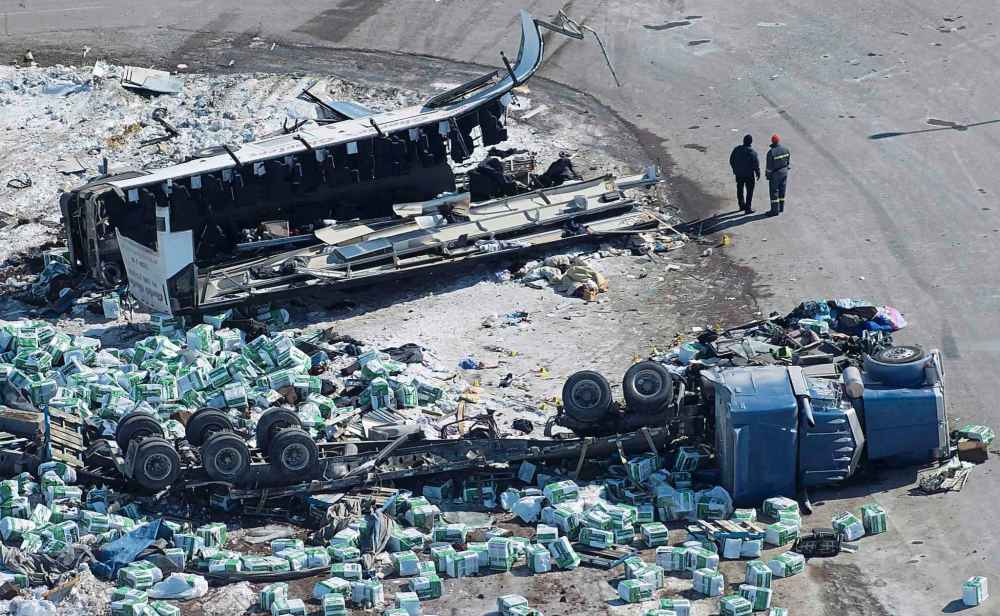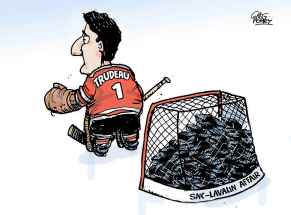Driver training a matter of public trust
Read this article for free:
or
Already have an account? Log in here »
To continue reading, please subscribe:
Monthly Digital Subscription
$0 for the first 4 weeks*
- Enjoy unlimited reading on winnipegfreepress.com
- Read the E-Edition, our digital replica newspaper
- Access News Break, our award-winning app
- Play interactive puzzles
*No charge for 4 weeks then price increases to the regular rate of $19.00 plus GST every four weeks. Offer available to new and qualified returning subscribers only. Cancel any time.
Monthly Digital Subscription
$4.75/week*
- Enjoy unlimited reading on winnipegfreepress.com
- Read the E-Edition, our digital replica newspaper
- Access News Break, our award-winning app
- Play interactive puzzles
*Billed as $19 plus GST every four weeks. Cancel any time.
To continue reading, please subscribe:
Add Free Press access to your Brandon Sun subscription for only an additional
$1 for the first 4 weeks*
*Your next subscription payment will increase by $1.00 and you will be charged $16.99 plus GST for four weeks. After four weeks, your payment will increase to $23.99 plus GST every four weeks.
Read unlimited articles for free today:
or
Already have an account? Log in here »
Hey there, time traveller!
This article was published 28/03/2019 (2453 days ago), so information in it may no longer be current.
An alarming aspect of the recent Ethiopian Airlines crash that killed 157 people were reports the pilot was inadequately trained.
The captain of the doomed flight had not practised on a new simulator for the Boeing 737 Max 8 before he flew one. And there are reports crews on other flights also did not train properly before they shifted from a previous model of the 737 to the newer Max 8.
As airline passengers, the public assumes the professionals in the cockpit are fully trained. We rely on the airline industry and government regulators to work together to devise a level of mandatory training that will keep the public safe. It’s a matter of trust.

It’s similar in the trucking industry. The public trusts trucking firms and government regulators will devise a level of mandatory training that will keep us safe from the semi-trailer trucks that roar along highways and wind through Winnipeg streets where they are allowed.
The Manitoba government announced Tuesday it plans to institute mandatory training for commercial truck drivers. Beginning Sept. 1, drivers of semi-trailer trucks will need 121.5 hours of training before they can test for their Class 1 licence. The changes will only affect new drivers, not the 41,000 truckers in Manitoba already on the road.
Infrastructure Minister Ron Schuler says consultations for the changes have been underway for two years, but it’s likely few Canadians outside of the transportation industry gave much thought to national standards before April 6, 2018. That was the dark day a truck blew through a Saskatchewan stop sign and hit a bus carrying the Humboldt Broncos junior hockey team, killing 16 people and injuring 13.
Confronted by the bleak evidence that so many young lives ended because of a semi driver’s negligence, Canadians suddenly cared intensely about whether truckers are properly trained.
Last week’s sentencing of the truck driver, Jaskirat Singh Sidhu, focused partly on the lack of mandatory training required in most Canadian provinces, including Manitoba. Mr. Sidhu had worked for a small trucking firm for only three weeks. His training consisted of spending two weeks with another driver, and a final week driving alone.
The court heard how, in the minute before the crash, Mr. Sidhu was preoccupied with a flapping tarp covering his truck’s load of peat moss and failed to notice four road signs about the intersection, including a large stop sign with a flashing light.
On Friday, Judge Inez Cardinal sentenced Mr. Sidhu to prison for eight years, saying, “We have to do something about the carnage on our highways.”
Manitoba’s announcement of mandatory training brings this province in line with Saskatchewan and Alberta, both of which made the move in recent weeks.

Some Manitoba trucking firms already require their new drivers to have more than double the 121.5 hours of training the province is instituting as the required minimum. They say the province isn’t going far enough.
Manitoba Trucking Association executive director Terry Shaw has said the industry wants the mandatory training standard to be 240 hours.
If that’s what the trucking industry wants, the province should listen to the people who have hands-on experience with the big rigs.
To reinforce the vital importance of the issue, recall the team picture of the young men wearing the green, gold, black and white team colours of the Humboldt Broncos. First-rate training for truckers — and as a result, safer roadways for all Canadians — can be their legacy.









